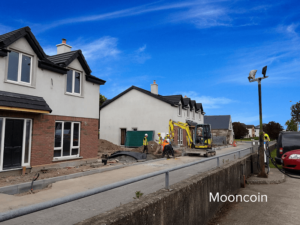For investors, the current economic environment is extremely challenging. Bond yields remain at all-time lows causing a major problem for savers and investors who traditionally relied upon these yields for income. At the same time, years of quantitative easing has pumped equity markets to all-time highs, despite the escalating geo-political risks.
In such a climate, it’s not surprising that investors are turning to alternative asset classes that might be considered somewhat more stable such as property. Yet buying property remains expensive and buy-to-let investment is a far less attractive option than it once was. This is where P2P lending platforms may offer an attractive solution. Less hassle and less costly than buy-to-let investment, we believe P2P property platforms provide the perfect entry into bricks and mortar investment while offering highly attractive returns.
Buy-to-let Investors Squeezed Out
Traditional routes into property investment are being squeezed as never before. Despite record rents, approvals for buy-to-let mortgages tumbled to just 119 in April, down 30%, YoY. This follows a 7% drop in March as landlords complain of excessive regulation in the business. A key turning point for Landlords was the introduction of the rental cap. However, legislation has not stopped there.
A Bill legislating for new rules around short-term property lettings has passed in the Seanad and will come into law on July 1st. Provisions in the Bill include a requirement that short-term lettings for any period up to a maximum of 14 days in rent pressure zones require planning permission unless specifically exempted, with fines of up to €5,000.
The legislation also increases the notice landlords must give tenants to vacate a property, and increases the number of areas included in the rent pressure zone, or rent certainty, which limits rent increases to 4% annually. It allows the Residential Tenancies Board to investigate landlords for breaches of the legislation including where the notice to quit a property is done on a false or misleading basis with fines of up to €15,000. Notice periods will also increase significantly with tenants in a property for over six months but less than a year will have their notice extended to 90 days from 35 days.
A recent article from Fiona Reddan in the Irish Times highlights the plight of Landlords when tenants ‘go bad’. In the article, Reddan cites a case in Dublin 4, where the tenant destroyed the property and clocked up €45,000 in arrears. This case has caused local estate agent Owen Murphy to call the Residential Tenancies Board (RTB) not fit for purpose.
Investors Driven to Alternatives
As a result, many investors squeezed out of the buy-to-let market have begun to look to alternatives such as P2P lending.
In their simplest form, P2P platforms connect those with money to invest directly with those looking to borrow. By removing intermediaries, investors can achieve solid returns and benefit from reduced transaction costs. Additionally, P2P performance has proven to be robust with many of the largest P2P lenders in the UK delivering net returns of around 16.53% over 3 years. In 2018, the largest P2P real estate platform in the UK, LendInvest, lent €600m for the construction of over 1,000 new homes.
The rise of P2P, together with a decade of low-interest rates has inspired many would-be savers to seek alternatives to traditional banks saving accounts to boost their income.
Lending is robust too. Last year, P2P lending volumes stood at £3bn in the UK, according to figures compiled the UK P2P Finance Association (P2PFA), while P2P lending to date now stands at £15bn and within this property-based P2P lending, in particular, is experiencing healthy demand.
It is important to note, despite loans being backed by physical assets, risks are inherent with property development. Property Bridges makes all endeavors to mitigate the risks involved, by lending at conservative loan to values and undertaking robust due diligence on every project. Some risks such as project delays and a falling property market cannot be fully eliminated.
P2P Property Investment
Property-backed P2P lending has become increasingly popular with investors because the loans are secured against bricks and mortar, reducing risk of capital loss, yet maintaining the healthy returns on offer.
Property Bridges like other P2P property platforms allow lenders to supply funding to property developers to either build small developments or refurbish old buildings into residential accommodation. A key element of risk management is that Property Bridges will only lend up to 70% of the gross development value of a project. This means that each project will have equity of 30% which acts as a buffer to any decline in asset value. As Property Bridges debt is first ranking charge over the physical asset, our charge takes precedence to the borrower’s equity. In simplistic terms, if the asset dropped in value by 30%, the borrower would lose their equity and all of the debt would be preserved. The asset value would have to fall by over 30% to impact the lender debt.
The loans are typically short-term, from 6 to 24 months, so investors lose the potential for a windfall return on the longer-term investment in a buy-to-let property that is gaining in value each year. But the returns are generally more predictable, there are no void periods like there are with rental properties. Furthermore, investors can diversify by investing small amounts in multiple loans instead of leveraging up on one buy-to-let property.
In essence, P2P property investment can offer robust fixed yields, backed by physical property assets. With due diligence undertaken by the P2P platform and available to potential investors, loans are likely to be advanced to borrowers that have credible plans for their properties and pose little risk to investors while at the same time offering investors greater liquidity and more attractive returns than may be found in traditional property investments. That said, we always advise investors to do their own due diligence.
To learn more about our process or find out about our upcoming loans, please visit www.propertybridges.com.


